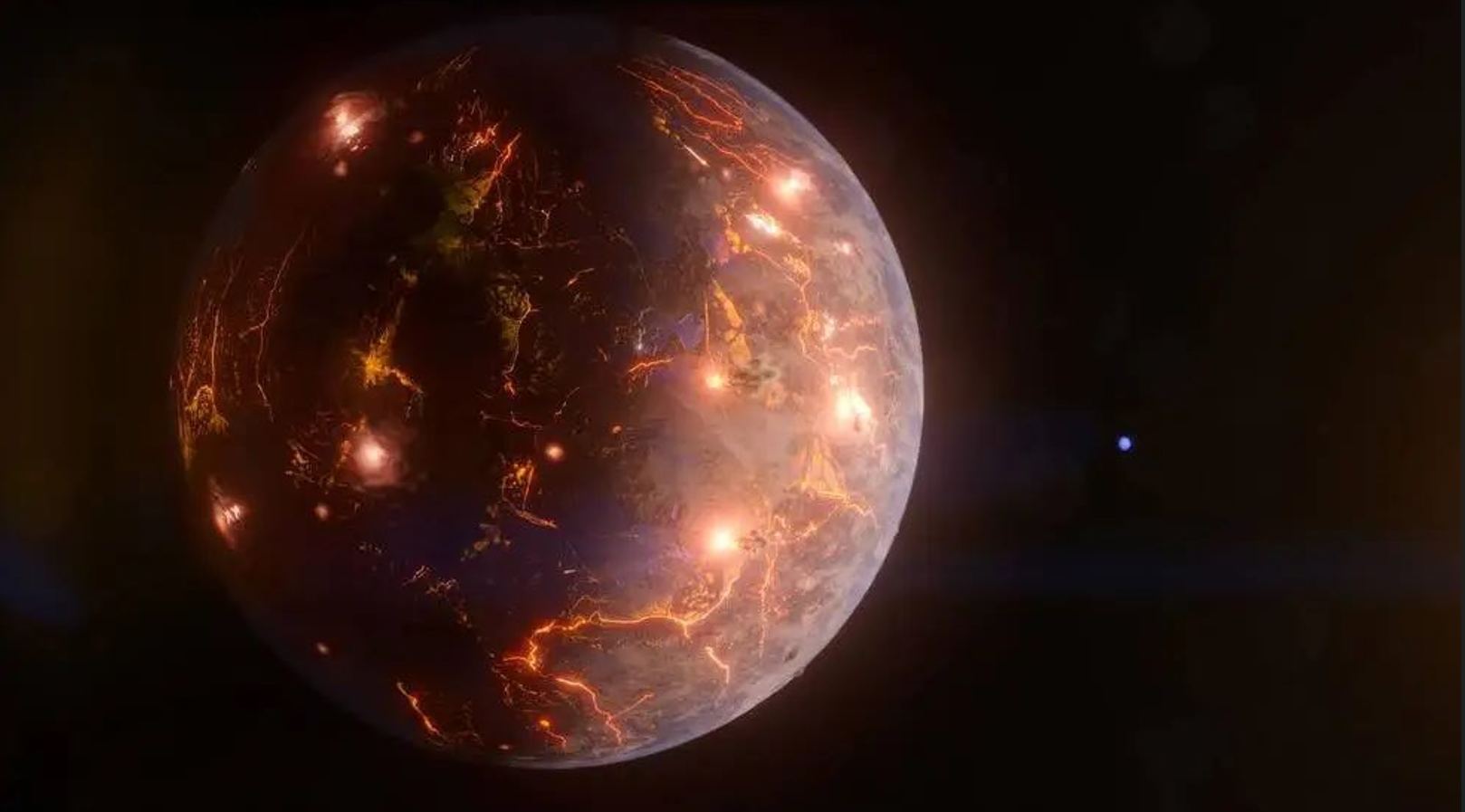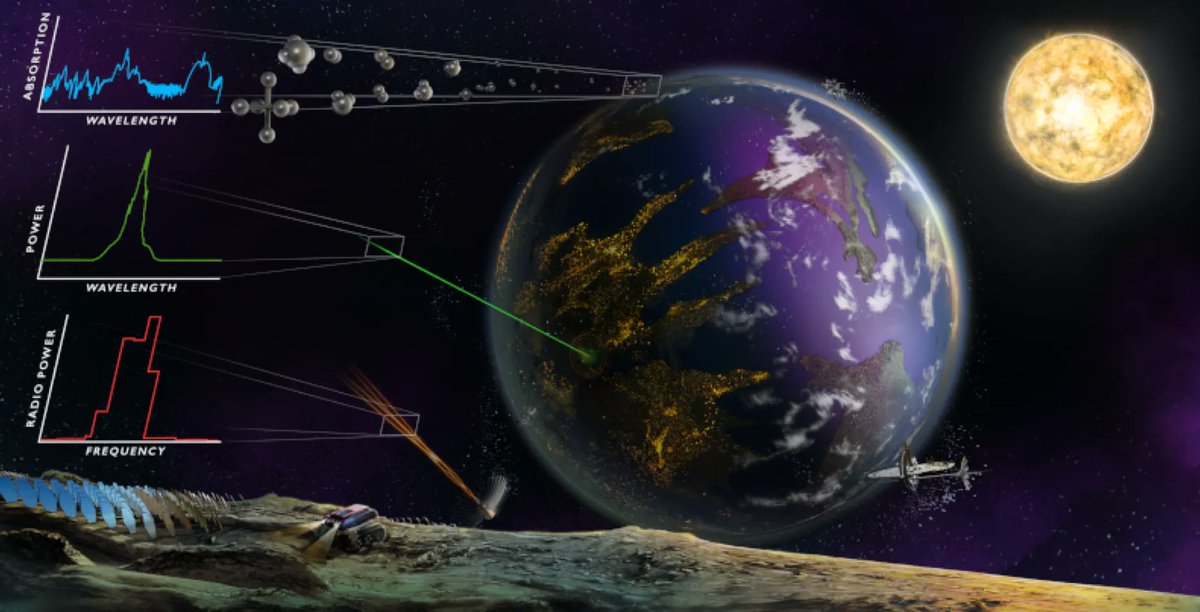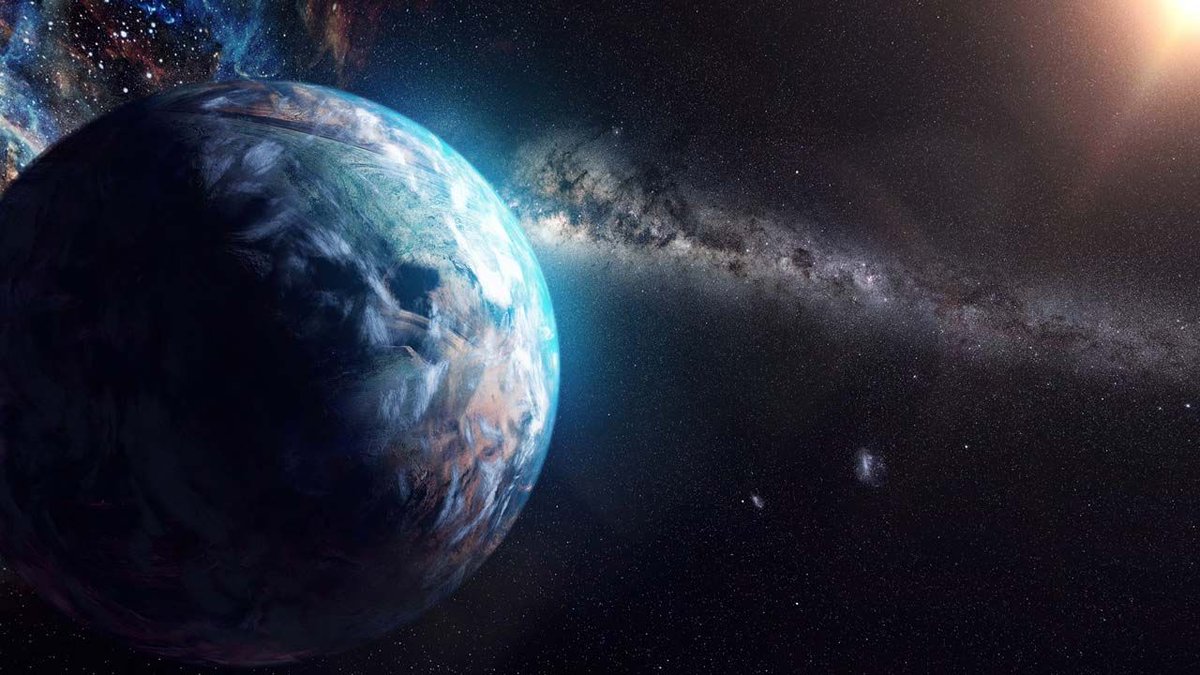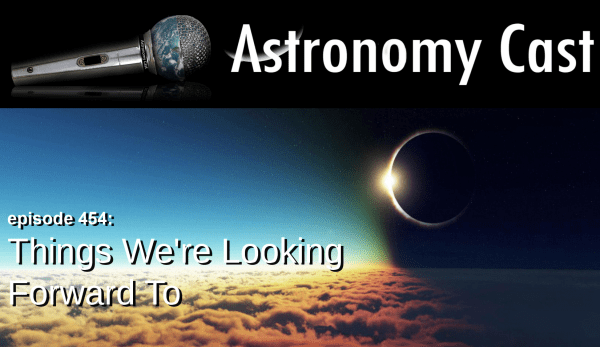After a few decades of simply finding exoplanets, humanity is starting to be able to do something more – peer into their atmospheres. The James Webb Space Telescope (JWST) has already started looking at the atmospheres of some larger exoplanets around brighter stars. But in many cases, scientists are still developing models that both explain what the planet’s atmosphere is made of and match the data. A new study from researchers at UC Riverside, NASA’s Goddard Spaceflight Center, American University, and the University of Maryland looks at what one particular atmospheric process might look like on an exoplanet – volcanism.
Continue reading “Could We Directly Observe Volcanoes on an Exoplanet?”Future Space Telescopes Could be 100 Meters Across, Constructed in Space, and Then Bent Into a Precise Shape
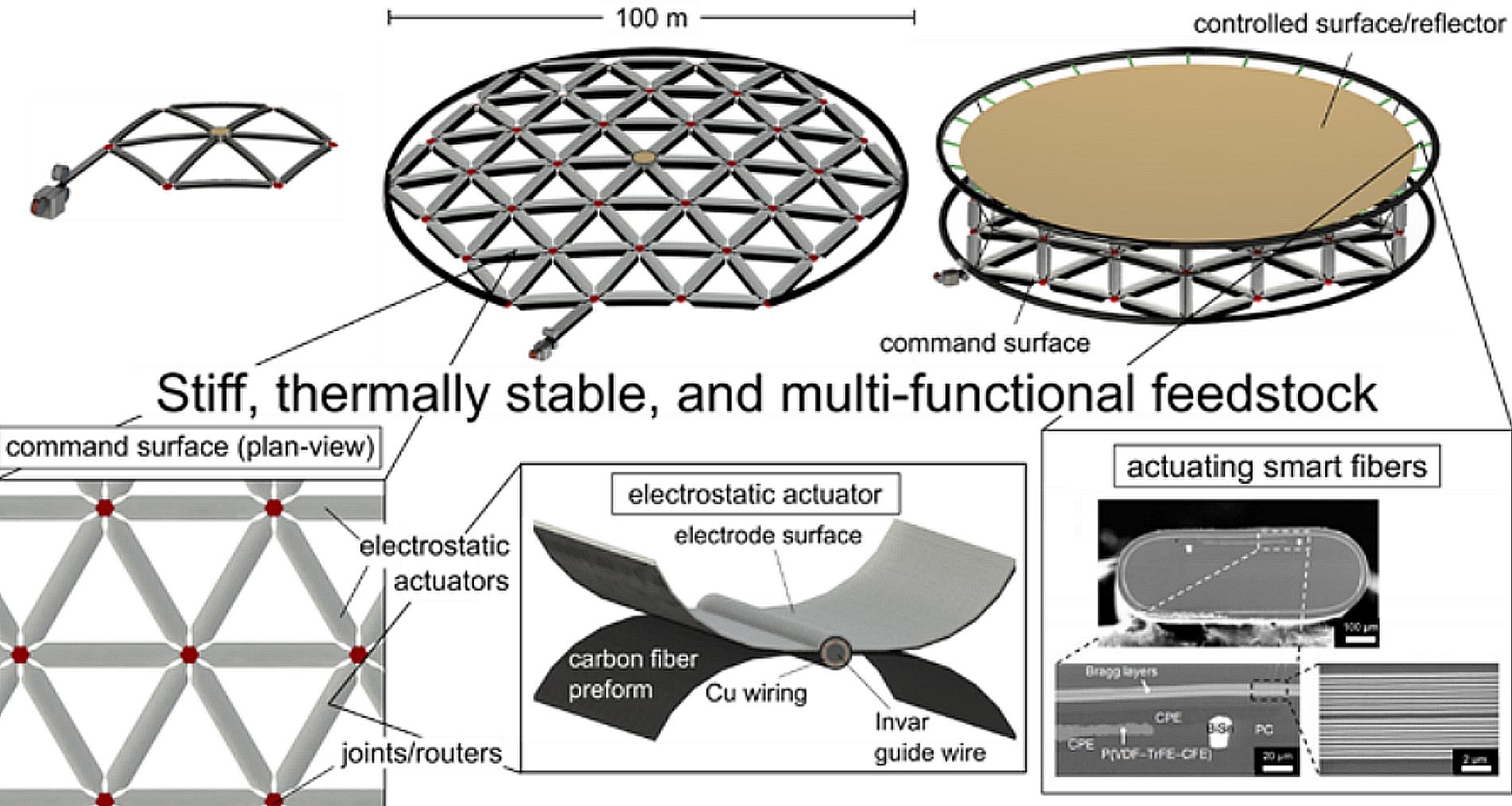
It is an exciting time for astronomers and cosmologists. Since the James Webb Space Telescope (JWST), astronomers have been treated to the most vivid and detailed images of the Universe ever taken. Webb‘s powerful infrared imagers, spectrometers, and coronographs will allow for even more in the near future, including everything from surveys of the early Universe to direct imaging studies of exoplanets. Moreover, several next-generation telescopes will become operational in the coming years with 30-meter (~98.5 feet) primary mirrors, adaptive optics, spectrometers, and coronographs.
Even with these impressive instruments, astronomers and cosmologists look forward to an era when even more sophisticated and powerful telescopes are available. For example, Zachary Cordero
of the Massachusetts Institute of Technology (MIT) recently proposed a telescope with a 100-meter (328-foot) primary mirror that would be autonomously constructed in space and bent into shape by electrostatic actuators. His proposal was one of several concepts selected this year by the NASA Innovative Advanced Concepts (NIAC) program for Phase I development.
JWST Pioneer Passes Along Advice for Future Space Telescope Builders

After a quarter-century of development, NASA’s James Webb Space Telescope is a smashing success. But senior project scientist John Mather, a Nobel-winning physicist who’s played a key role in the $10 billion project since the beginning, still sees some room for improvement.
Mather looked back at what went right during JWST’s creation, as well as what could be done better the next time around, during a lecture delivered today at the American Astronomical Society’s winter meeting in Seattle.
Continue reading “JWST Pioneer Passes Along Advice for Future Space Telescope Builders”Which Missions and Observatories can Detect Technosignatures?
The search for technosignatures has always taken a back seat in the broad search for extraterrestrial life forms. Biosignatures, such as methane in an exoplanet’s atmosphere, have long been front and center. But while we are searching for signs of biology, signs of technology might be hiding in plain sight. According to a new report from the members of the TechnoClimes conference, humanity could potentially find signs of technology by simply using data that will already be collected for other purposes. To prove their point, they came up with a list of possible technosignatures and cross-referenced them with a list of observatories that could potentially find them. The result is a framework of how to best search for technosignatures and a plethora of references for those seeking them out.
Continue reading “Which Missions and Observatories can Detect Technosignatures?”The Decadal Survey is out! What new Missions and Telescopes are in the Works?
It’s that time again. Once every ten years, the American astronomy community joins forces through the auspices of the National Academies to produce one of the most important and influential reports in their discipline – the decadal survey. This report has been the impetus for some of the great observational instruments of our time, including Spitzer, the Large Millimeter Array, and Chandra. Upcoming heavy-hitting observatories, such as Nancy Grace Roman and Vera C. Rubin, also spawned from suggestions made in the Decadal Survey. In short, if you want to get a grandiose space telescope funded, your best bet is to have it supported by the National Academies in the form of the Decadal Survey. Now a new one is out – so what does it back for the upcoming decade and beyond?
Continue reading “The Decadal Survey is out! What new Missions and Telescopes are in the Works?”A Technique to Find Oceans on Other Worlds

You could say that the study of extrasolar planets is in a phase of transition of late. To date, 4,525 exoplanets have been confirmed in 3,357 systems, with another 7,761 candidates awaiting confirmation. As a result, exoplanet studies have been moving away from the discovery process and towards characterization, where follow-up observations of exoplanets are conducted to learn more about their atmospheres and environments.
In the process, exoplanet researchers hope to see if any of these planets possess the necessary ingredients for life as we know it. Recently, a pair of researchers from Northern Arizona University, with support from the NASA Astrobiology Institute’s Virtual Planetary Laboratory (VPL), developed a technique for finding oceans on exoplanets. The ability to find water on other planets, a key ingredient in life on Earth, will go a long way towards finding extraterrestrial life.
Continue reading “A Technique to Find Oceans on Other Worlds”What Would It Take To See Artificial Lights at Proxima Centauri B?
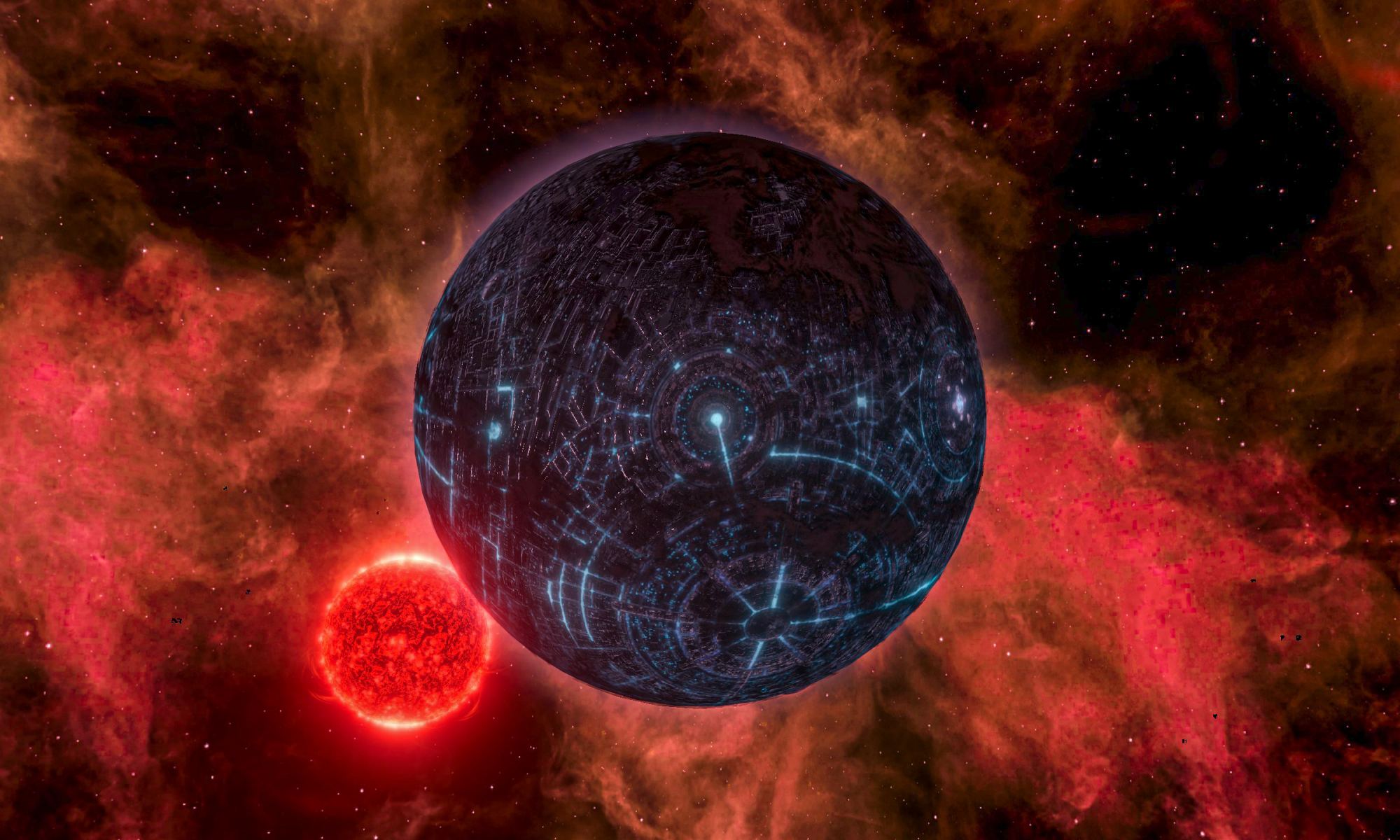
Is there an alien civilization next door? It’s…possible(ish). In late 2020, we discovered a signal from the direction of Proxima Centauri (not necessarily from Proxima Centauri), our closest neighbour star. Named BLC- 1 by project Break Through Listen, the signal is still being analyzed to ensure it isn’t simply an echo of our own civilization – typically what they turn out to be. But why not just directly look at planets in Proxima Centauri and see if a civilization is there?
From space, the most obvious sign somebody lives on Earth is the glow from the nightside of our planet. Our cities emit light that’s shed into the Cosmos. Problem is that our current generation of telescopes are not powerful enough to see lights on distant worlds. But several researchers are testing the capabilities of the next generation of telescopes already on the drawing board. The finding? Yes! if advanced enough…or glowy enough…we would be able to see if another civilization has the lights on at Proxima Centauri.
We Could Find Extraterrestrial Civilizations by Their Air Pollution
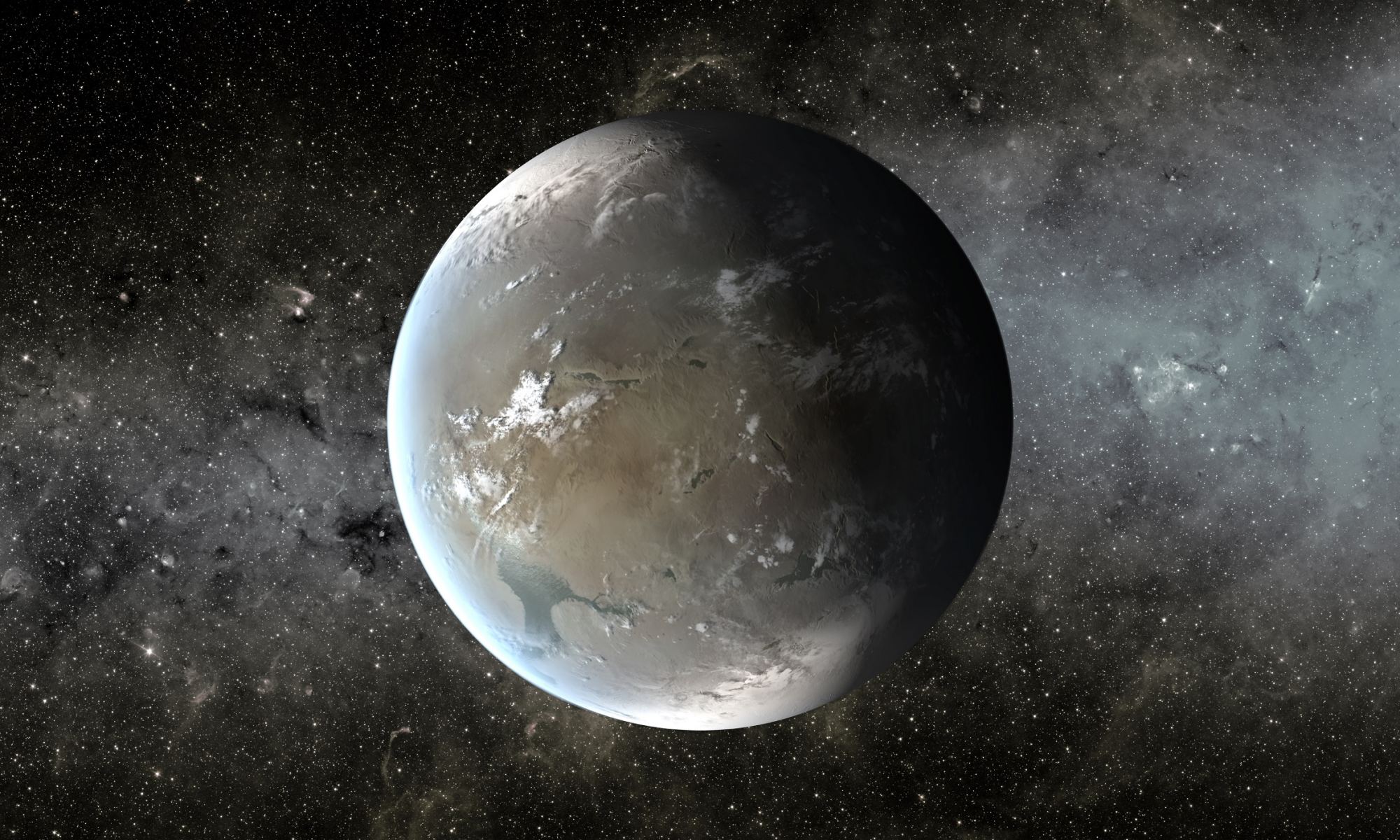
Upcoming telescopes will give us more power to search for biosignatures on all the exoplanets we’ve found. Much of the biosignature conversation is centred on biogenic chemistry, such as atmospheric gases produced by simple, single-celled creatures. But what if we want to search for technological civilizations that might be out there? Could we find them by searching for their air pollution?
If a distant civilization was giving our planet a cursory glance in its own survey of alien worlds and technosignatures, they couldn’t help but notice our air pollution.
Could we turn the tables on them?
Continue reading “We Could Find Extraterrestrial Civilizations by Their Air Pollution”Hubble Shows the True Size of Andromeda

It’s possible that you’ve seen the Andromeda galaxy (M31) without even realizing it. The massive spiral galaxy appears as a grey, spindle-shaped blob in the night sky, visible with the naked eye in the right conditions. It’s the nearest major galaxy to ours, and astronomers have studied it a lot.
Now astronomers have used the Hubble Space Telescope to map out Andromeda’s enormous halo of hot gas.
Continue reading “Hubble Shows the True Size of Andromeda”Astronomy Cast Ep. 454: Things We’re Looking Forward To
As we wrap up season 10 of Astronomy Cast, we look forward to all the instruments, missions and science results on the distant horizon. Think astronomy is exciting already? Just you wait.
We’re taking our summer hiatus during July and August, but we’ll be back in September with all-new episodes!
Visit the Astronomy Cast Page to subscribe to the audio podcast!
We usually record Astronomy Cast as a live Google+ Hangout on Air every Friday at 1:30 pm Pacific / 4:30 pm Eastern. You can watch here on Universe Today or from the Astronomy Cast Google+ page.

